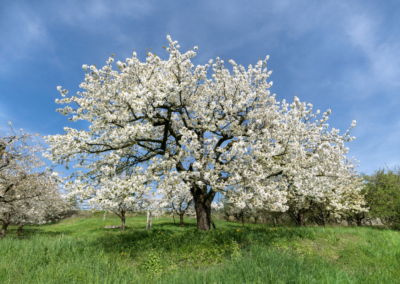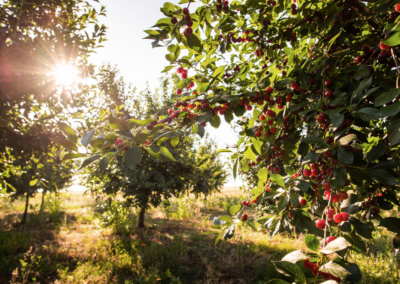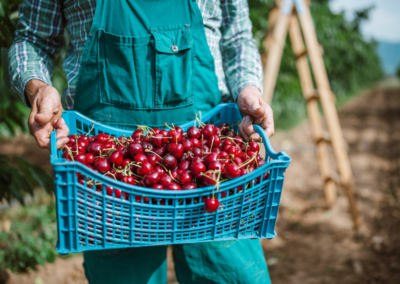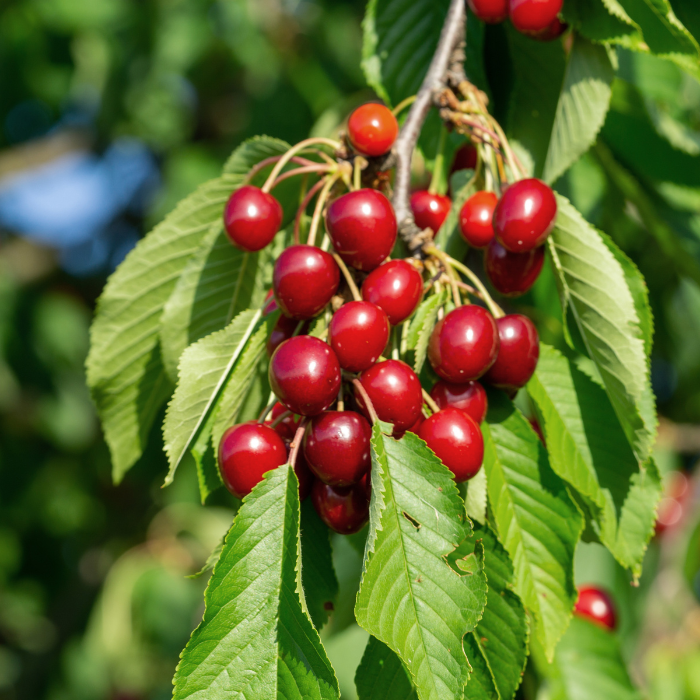
The sour cherry
(Prunus Cerasus)
In Asia Minor, today’s Turkey, cherries were already being cultivated several centuries before the birth of Christ. But it was not until the Roman general Lucullus brought them back to Rome from a successful campaign against Mithridates in 64 BC. From there, the cherry spread throughout Europe along with the Roman Empire.
Back then, the red fruit was valued above all for its flavour. However, it was not used in natural medicine by our ancestors. Today we know more and the sour cherry is becoming more and more interesting, also for scientific research.
The sour cherry owes its rich colour to anthocyanins, which are important nutritional substances from today’s perspective.
Vistula cherries
Bright red and full of good materials
In contrast to sweet cherries, sour cherries have a different content of phytochemicals, which makes them interesting for nutrition-conscious people. Sour cherries offer a very specific mix of phytochemicals and contain a high number of polyphenols and anthocyanins, which are so valuable for our bodies.
And this is precisely why sour cherries form the basis for the high-quality CherryCraft® extract that we use for rubyni® sour cherry.
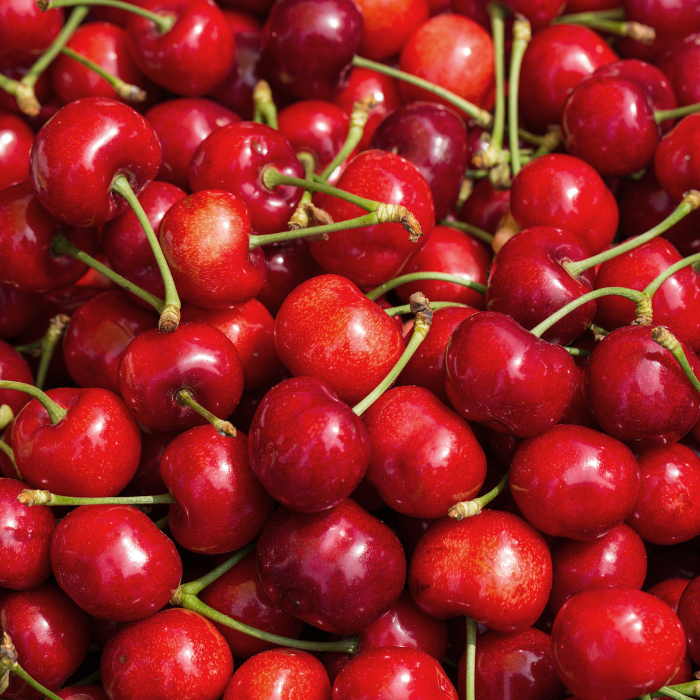

The growing areas
Spoiled by the sun
Sour cherries are mainly cultivated in Eastern Europe. We source them exclusively from Poland. Our partner is a co-operative of around 80 farmers whose sour cherry trees line the banks of the river of the same name. Due to its proximity to the water, the soil is not only particularly fertile, but also well protected from frost.
The co-operative with which we work has been in existence since 2005, and it is not only the quality of the fruit that is impressive. Because the cherries are harvested by hand, we can also process them in the best possible condition.
The history
Prunus Cerasus in human history
4th century BC.
In Kerasos (Asia Minor, today Giresun in Turkey), a cherry-growing region is established where trees with larger and sweeter fruit are cultivated for the first time.
1st century BC.
The Roman general Lucullus brings the cherry from Kerasos back from a campaign. With the expansion of the Roman Empire, the cherry spread throughout Europe.
Middle Ages
The cherry is used as an oracle tree. It is also used in many different ways in nutrition.
19th century
Cherry is the most popular root wood for Biedermeier furniture. Cherry stone cushions are used as hot water bottles and leaves are mixed into pipe tobacco.
2018
Researchers investigated the anti-oxidative effect of sour cherries in connection with the cardiovascular system.
2019
A study confirms earlier research on athletes.
